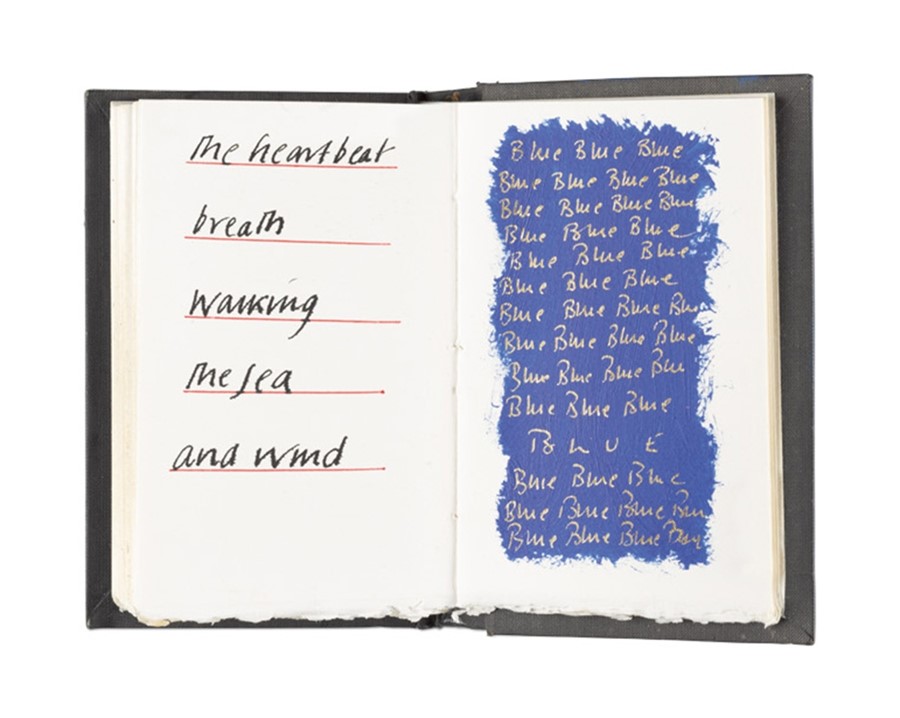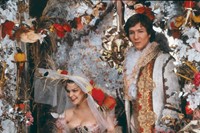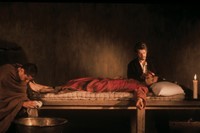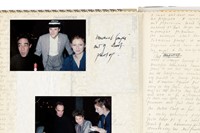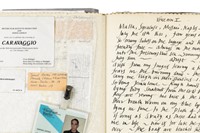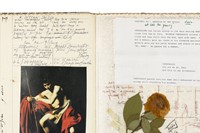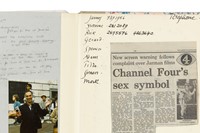Twenty years after his death, we consider the many shades of Derek Jarman through his art, films and sketchbooks
The coming year marks two decades since the visionary artist, filmmaker and poet Derek Jarman died at the cruelly young age of 52. Tributes to this singular artist are already in motion, in the form of an exhibition at London’s Wilkinson Gallery, and a beautiful publication of his sketchbooks by Thames & Hudson. Meanwhile the Jarman Award, inspired by his experimental filmmaking and dedicated to nurturing emerging artists in film and video, is five years old this autumn.
At Wilkinson, the gallery is showing Jarman’s series of Black Paintings, small canvases painted between 1982 and 1991, which have an undercoat of gold leaf covered in successive layers of black paint. Jarman was diagnosed with HIV in 1986, and the paintings take on a sombre edge when viewed within the context of his personal history. With cracked light-bulb shards, poetic scribbles, and bits of rope mired in the pitchy black, Jarman – a collector of flotsam and jetsam in his black tar cottage in Dungeness – hints at a fragmenting life. But as he states in the chapter Black Arts in his book Chroma, a meditation on the colour spectrum, “Doesn't every dark thundercloud have a silver lining? In black lies the possibility of hope. The universal sleep is hugged by black. A comfortable, warm black. This is no cold black, it is against this black that the rainbow shines like the stars.” There is black humour at work in these pieces too – a toy He Man embraces a crucifix as a couple of Skeletors stand guard in the painting I.N.R.I. Upstairs in the gallery, silent film Waiting for Waiting for Godot, its characters ghost-like behind the blueish grain, plays across an enormous wall.
"In black lies the possibility of hope. The universal sleep is hugged by black. A comfortable, warm black. This is no cold black, it is against this black that the rainbow shines like the stars” — Derek Jarman
According to Jonathan P. Watts in the notes to the exhibition, Jarman was an obsessive auto-biographer, and these paintings function as diaristic collages for a man in declining health but with a no less engaged mind. This month saw the publication of extracts from his 30 sketchbooks, which detailed his artistic process across poems, drawings and pressed flowers (Jarman was a keen horticulturalist) and whose covers were also painted finger-staining black. With affectionate tributes from his friends and colleagues, including Tilda Swinton and Neil Tennant, the book highlights his generous nature as much as his pioneering artistry. It continues to be celebrated yearly with the Jarman Award, giving young artists a cash prize and the chance to produce a series of artworks for Channel 4, the once radical channel that helped fund and distribute arguably Jarman's best-known film Caravaggio.
So, as the anniversary of his death draws ever closer, we celebrate the multiplicity of his talents. As the writer Jon Savage notes in the book, “There are so many different Derek Jarmans that it feels strange to focus on just one aspect of the man.”
Derek Jarman’s Sketchbooks is out now, published by Thames & Hudson. Derek Jarman, Black Paintings and Waiting for Waiting for Godot is at the Wilkinson Gallery until December 1 and the winner of the Jarman Award is announced on November 6.
Text by Laura Allsop
